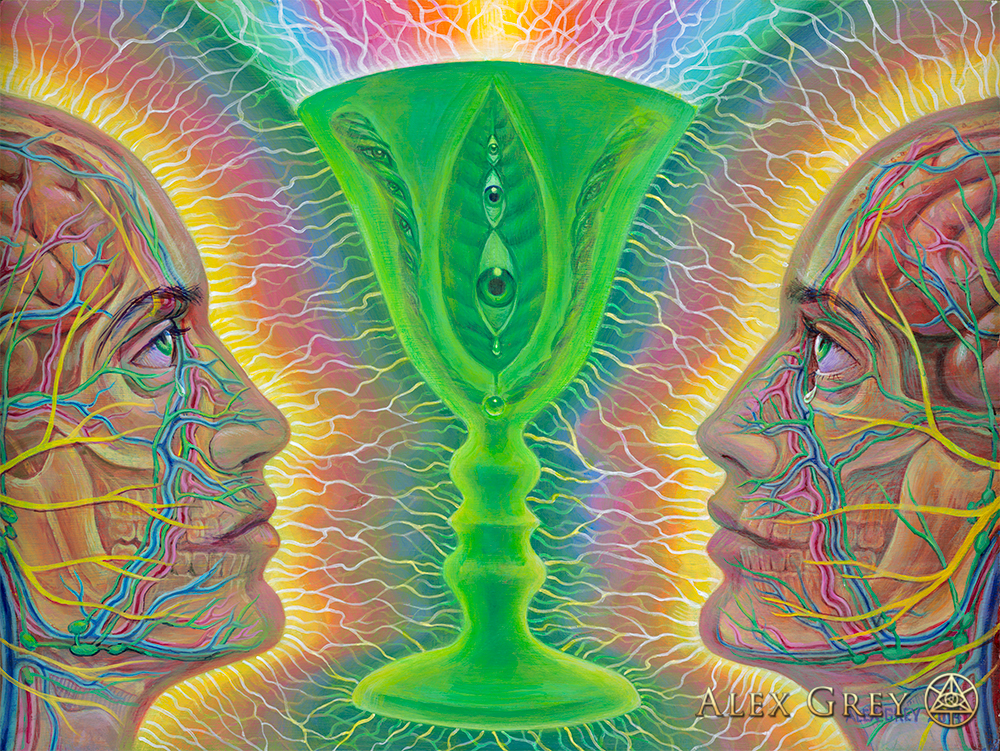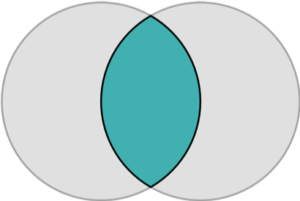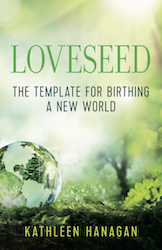
“You have that love inside of you, where you came from, where there are no problems, no movement, no bodies, where there is no necessity for separation because all is one…..Knowledge of that love is deep inside you, deep inside your body, underneath your self. You can only love anything to the degree that you have a knowledge of this original love within you; the love of being one and not being many.”
—Barry Long
A conscious relationship is one in which there is a conscious awareness of this essential oneness of which Barry Long speaks. This awareness allows two people to be honoring and generous with each other, and mitigates the inevitable moments when the illusion of separateness arises, and the other is seen as an enemy. In a conscious relationship, when this happens, there is intentional effort and often practices to create a bridge back to the other person.
So why wouldn’t everyone want a conscious relationship? In truth, such a relationship involves both people being willing to move through the layers to connect to their loveseeds, which involves a rather heroic effort. It means letting go of defenses and fully opening to the other person. It means a depth of a devotion to the other as Beloved, and that is not for the faint-hearted.
The ingredients to create a conscious relationship
The good news is that poets, philosophers, musicians, and psychologists, along with spiritual teachers, theologians, scientists, and authors have been sharing about this path for thousands of years. To make it practical and simple, there are three key elements required for a conscious relationship. They are not always easy for human beings to cultivate, but they are essential: vulnerability, responsibility, and compassion. When all three are present, you have the ingredients for a conscious relationship, which can be fully cooked by the heat of your love.
Brene Brown says, “Vulnerability sounds like truth and feels like courage. Truth and courage aren’t always comfortable, but they are never weakness”. The Greek word for truth is aletheia, which means to un-hide or hiding nothing. Truth is the sexiest quality you can bring to a relationship and often resuscitates waning passion. It is a privilege to receive another person’s truth. Being in an intimate relationship where both people are committed to being vulnerable is one of the fastest paths to enlightenment—and one of the most difficult and rewarding.
Responsibility is when you fully own what you have done to create a rupture or hurt your partner. In healing from a betrayal, you will recall that it is essential that the betrayer take full ownership for what he/she has done to hurt the other—with no excuses. Blaming someone else for your own actions is a form of betrayal, because you become untrustworthy even to yourself, and it is a huge obstacle to compassion.
Compassion is the sweet nectar of genuine love and is most difficult and most needed when we have been wounded by our partner. If you are the one who has been hurt, you must remember your partner’s vulnerability and their imperfections and be willing to accept a genuine repair while remaining compassionate toward the self. If you are the one who has hurt your partner, it is an act of love to defer the gratification of telling your side of things and to remain a compassionate listener to your partner, taking the third position of doing what serves the relationship best, all the while remaining compassionate toward the self, no matter what you have done. You need no excuses when you realize you are always doing the best you can, and when the best is hurtful to your partner, or anyone else for that matter, you determine to do something about it.
Failure to be compassionate toward others is always an indication that you are not holding a space of mercy and compassion for self. Compassion for self is the well from which you draw an endless source of compassion for others.![]() It is each person’s responsibility to make sure that when that well is running dry, steps are taken to bring it to fullness again. That brings you back to personal responsibility. Each of these three qualities strengthens the other.
It is each person’s responsibility to make sure that when that well is running dry, steps are taken to bring it to fullness again. That brings you back to personal responsibility. Each of these three qualities strengthens the other.
A conscious relationship needs to be nurtured like a child
Two of my most inspiring teachers on relationship are Steven and Ondrea Levine, who devoted their lives to teaching and living as examples of love. Here is what they have to say about conscious relationship:
A conscious relationship teaches us to treat ourselves and others as our only child. And to do it mindfully. It does not break the heart. A conscious relationship is as healing and life-affirming as an unconscious, old-style relationship is at times harmful and life-denying. The harmful effect of an unconscious relationship is that it keeps us so small, dependent on external circumstances for our happiness. More needs than gifts are brought to such an entanglement. But a conscious relationship offers the possibility of relating across the gulf of I and other all the way into the heart of our beloved. A conscious relationship allows us to remain conscious while in relationship. It's a whole new ball game. (Embracing the Beloved, Stephen and Ondrea Levine)
I tell the couples I work with that their relationship is really their child, and that the well-being of that child depends on how they both take care of it. When things aren’t positive between them, I have them see their relationship as a fussy child who needs to be tended to. Possibly more attention, maybe better boundaries and more structure, less work, and more fun.
Each person can always choose to bring something better to any relationship, if the need to be right is surrendered. When the well-being of the child is not more important than being right, the couple begins sliding down a very slippery slope, and I mean this in the literal sense of an actual child, as well as the metaphorical child of the relationship.
The challenges to be faced in a conscious relationship
Love, in all its countless forms, stretches and expands you into a brave new world, a higher dimension of consciousness, beyond conflict and differences. Psychological theorist Eric Fromm says that, “Love is the only sane and satisfactory answer to the problem of human existence”
Because we live in a world of duality in the third dimension, each of us must face the polarities that arise and find a way to resolve and even dissolve the effects of conflict. This is not a simple task, as our survival brains are wired to think in black and white, right and wrong, mine and yours. There is no avoidance of this conflict in a conscious relationship, and in fact, attempts to avoid lead to a deadening of passion.
The spiritual work in a conscious relationship is to:
- Transcend the illusion of separateness
- Use conflict for growth
- Balance surrender and sovereignty
Each of these challenges requires intention, commitment and a spirit of generosity that grow us into full-fledged adults capable of truly loving.
Transcending the illusion of separateness
Sacred Union is the archetype of Oneness that symbolizes the healing of all the ways we separate from God and one another. Couples who embark on a path of Sacred Union have the intention of seeing their partner as a manifestation of the Divine, of the Beloved in form. The Beloved is that aspect of your own being that is one with the I AM or Christ consciousness. It is an inexhaustible force of love that is destined to reunite with you in perfect oneness.
A symbol for Sacred Union is the Vesica Pisces, which is one of the most profound and sacred geometric shapes of ancient and modern times. The spheres represent God and Goddess and the overlapping creates the divine offspring. When the Vesica Piscis is viewed horizontally, the mandorla becomes the birth passage. It is also a symbol for Christ, the Tree of Life, and the Flower of Life, which is the pattern of Creation. Consider the power when two people come together in this space of Sacred Union and birth a new consciousness on common ground. Consider the power of this archetype as a model for politics and government and all domains of conflict where connection is trying to happen.
Sacred Union is not about achieving great sex or gaining cosmic powers. It is an ancient alchemical process that forever alters your existence. When you experience Sacred Union with your partner, the two of you become one in that third place of union with the Divine, which is the same place in both of you. The mystic poet Rumi says, “Lovers don't finally meet somewhere, they're in each other all along” To open the doorway to the Beloved with another person is an exalted way of loving and involves the merging of the wisdom, courage, and compassion through consciousness and sexuality.
Using conflict for growth
The ache of conflict in a relationship is one that can motivate two people to face and transcend their differences and ascend in consciousness to a dimension of clarity, truth, and love.![]() When the partners in a marriage are willing to do that inner work and open to the messages from their souls, a very different opportunity arises out of the tension of conflict. Unfortunately, most people run from such encounters, because the truth is that it takes big courage.
When the partners in a marriage are willing to do that inner work and open to the messages from their souls, a very different opportunity arises out of the tension of conflict. Unfortunately, most people run from such encounters, because the truth is that it takes big courage.
It takes facing the unknown and surrendering the need to always feel safe. It is edgy work, and many people are already so overwhelmed that the drive for stability and security prevails. When one or the other partner is “in survival,” the focus and energy are not available to question the unconscious beliefs about relationships that are passed down and seep in from the culture, and the downward pull takes over, often in the form of complacency.
Taking the time to sit down and truly listen to each other is essential, and it helps to have a practice such as reflective listening, to guide the process. Being able to drop your end of the rope and open up the space to take in your partner is an act of love that grows you as a human being.
I tell my clients that they must ditch the 50/50 thinking, and that each one of them must bring 100 percent to the relationship, that 100 percent vulnerability is the only way to give and receive the fullness of who we are. Two people who are consciously cultivating this love-fullness will bring to their own intimate partnership an infinite source of passion and deepening. And conflict will be welcomed as connection trying to happen, rather than something to avoid or control.
Balancing surrender and sovereignty
There are no guarantees when you pull back the curtain on an unconscious relationship that the two people will end up wanting to remain together. The mystery to be revealed is whether each person can live as a fully autonomous and self-actualized human being and at the same time surrender to the relationship with the other person. In other words, what form will the relationship take, if each person is true to their primary vow, which is to their own soul?
As psychotherapist Esther Perel says, “Love rests on two pillars: surrender and autonomy. Our need for togetherness exists alongside our need for separateness.”
We need to make clear requests and eliminate complaints and criticism entirely. We must consciously allow ourselves to be influenced by our partners, rather than digging in our heels for fear of loss of self. I see couples where one or the other partner fights every suggestion, and and reacts to a request with defensiveness, as if their lives depended upon winning. When you fight your partner at every turn, war is likely to break out, and rather than experiencing partnership, you invite loneliness and a lack of vision for your union.
The question as to when to “give in” and when to “take a stand” often arises in my work with couples. A relationship without boundaries in which neither can say “no” without retribution, is not a conscious relationship, but an entanglement. Submitting to your partner is a survival reaction from fear, and is always accompanied by resentment, whereas yielding to your partner can be an act of generosity.
This back and forth is the dance of relationship that must be sorted out over time, and the more secure each person is within themselves, the smoother the dance.
Conscious relationship and the power of three
It is useful to explore the energetics of three in light of creating a conscious relationships. First of all, you are not your relationship. A relationship is co-created by the people within it, and relationships between two people always have a third aspect. When you realize that any relationship is separate from who you really are, you can use this awareness as a tool. When the other person says something hurtful or complains, you can remember that they are not targeting you, but the relationship. They may be unhappy with how things are going in the relationship, so they come to you to talk about it, and even blame you. Blame is never a good idea, but sometimes we simply have to be able to hear what is going on and not take it on.
Remembering the co-created aspect helps you to not take things personally even when they seem so personal. This doesn’t mean you don’t have your part, as all relationship is about a dynamic. When you shift to this way of seeing things, you realize that your partner is really talking about what you bring to the relationship. You can more easily step back t to see the situation objectively and not get so triggered by what the other person has said. Maybe you have been preoccupied with a project or a child or have been feeling depressed and not engaged. Maybe you have failed to do the small things that keep connection alive, and your partner is letting you know with or without skillful communication.
Taking responsibility for the relational space
The Jewish Philosopher Martin Buber said that our relationships live in the space between us, not in either of the people involved, nor in the dialogue, but in the space lived by the two. Buber called this space “sacred.” This space is the relational space, and one of my inspiring teachers, Hedy Schleifer, speaks of three invisible connectors: the relational space, the bridge between the worlds, and the encounter. “When we don’t know about the space, we pollute it quite automatically with a word, a look, a reaction, a withdrawal, a criticism, a judgment. We put it there unconsciously. And the space becomes uncomfortable,” says Hedy.
We take responsibility for the relational space when we cross the bridge to the world of the other with our full presence, and encounter our partner as a reflection of our own self. During the encounter, the neurons that allow for the capacity for empathy and deep understanding begin to come alive, and even new neural pathways begin to form, due to limbic resonance. This is because our brains are so very plastic and able to transform under the effects of this resonance when it is based on love.
That is why it is so important if you want to have a conscious relationship, that you slow down and step away from all the to-do's of life to simply be with your partner. Create the space to nurture the child of your relationship so that it grows up into a mature and conscious relationship that quite naturally makes this conflict-ridden world a better place.
Conscious relationship begins with you
The reality is that to co-create a conscious relationship, you must be intentionally involved in learning to love yourself. You must be willing to do the work of making all your relationships, not just your intimate partnership, sacred.
The Irish philosopher John O’Donohue says it so beautifully:
You can never love another person unless you are equally involved in the beautiful but difficult spiritual work of learning to love yourself. There is within each of us, at the soul level, an enriching fountain of love. In other words, you do not have to go outside of yourself to know what love is. This is not selfishness and it is not narcissism; they are negative obsessions with the need to be loved. Rather this is the wellspring of love within the heart.”
You can cultivate that exquisite quality of consciousness in your relationship with your children, your parents, your co-workers and neighbors….with the world itself, for indeed, this world is not separate from you.



